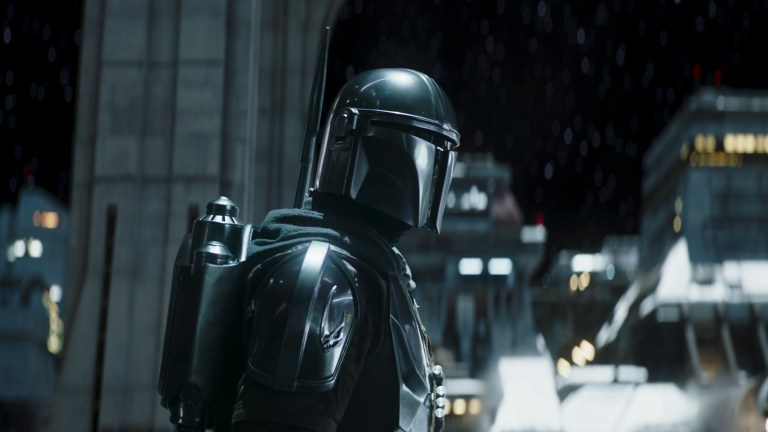Star Wars: Oscar Winner Reveals His Fascinating Connection to The Mandalorian
Oscar-winning actor Troy Kostur forever changed the way we think of Tuskens.

As Frank Rossi in the Best Picture winner CODA, Troy Kotsur plays a Deaf father maintaining his connection to his hearing daughter (Emelia Jones). The role earned Kotsur not only praise but also a Best Picture Academy Award, becoming the first Deaf actor to earn the accolade. But before that, Kotsur made a different type of history, long, long, ago in a galaxy far, far away. In an interview from January 2020 with The Daily Moth, Kotsur shares his experience working on the Disney+ series The Mandalorian and helping to develop the sign language used by the Tuskens.
Kotsur’s work appears in “The Gunslinger,” chapter five of The Mandalorian. The episode finds the titular character (Pedro Pascal) reluctantly agreeing to help young bounty hunter Toro Calican (Jake Cannavale) capture Fennec Shand (Ming-Na Wen). While tracking Shand across the deserts of Tatooine, the pair arrives in Tusken-controlled territory. Where Calican suggests they just shoot their way through the Raiders, Mando treats the Tuskens with dignity and bargains with them for safe passage.
For Kotsur, the entire project began with finding a way to portray the Tuskens with respect. While developing the language, he “did research on the culture and environment of Tusken Raiders.” This work made him realize that he must “avoid ASL (American Sign Language)” and ensure that the characters used “Tusken Sign language based on their culture and environment.” Through Kotsur’s work, the Tuskens were shown to be fully-developed people, with needs and culture, all relayed to the audience through the use of the actors’ bodies.
That’s a big difference from audiences’ first introduction to Tusken Raiders, way back in 1977’s original Star Wars. Luke Skywalker encounters them for the first time while looking for the runaway droid R2-D2. Derisively calling them “sand people,” Luke describes them as if they were merely slightly-evolved animals or barbarians. The film seems to bear that out when the first Raider leaps into Luke’s sight, attacking him with a guttural bark. Thanks to the work of Kotsur and others, Star Wars fans now see another side to Tuskens, one with far more dignity.
Even beyond its noble aims, just working on Star Wars was a dream come true for Kotsur. “I watched it 28 times [in the theater],” Kotsur revealed. The movie appealed to him precisely because of its visuals. Remember that in the year of 1977, technology was limited and accessibility for Deaf people were limited, but that Star Wars movie blew my mind,” he explained. “It was like “wet-eyes” – so visual for me.” The comments once again prove that Star Wars captures the imagination of most children, hearing or Deaf. But where most kids just get to wish they could work on Star Wars, Kotsur made it happen.
“When I was eight years old, I dreamed to be part of Star Wars. Many, many years later, almost 40 years later- it is fate.”
